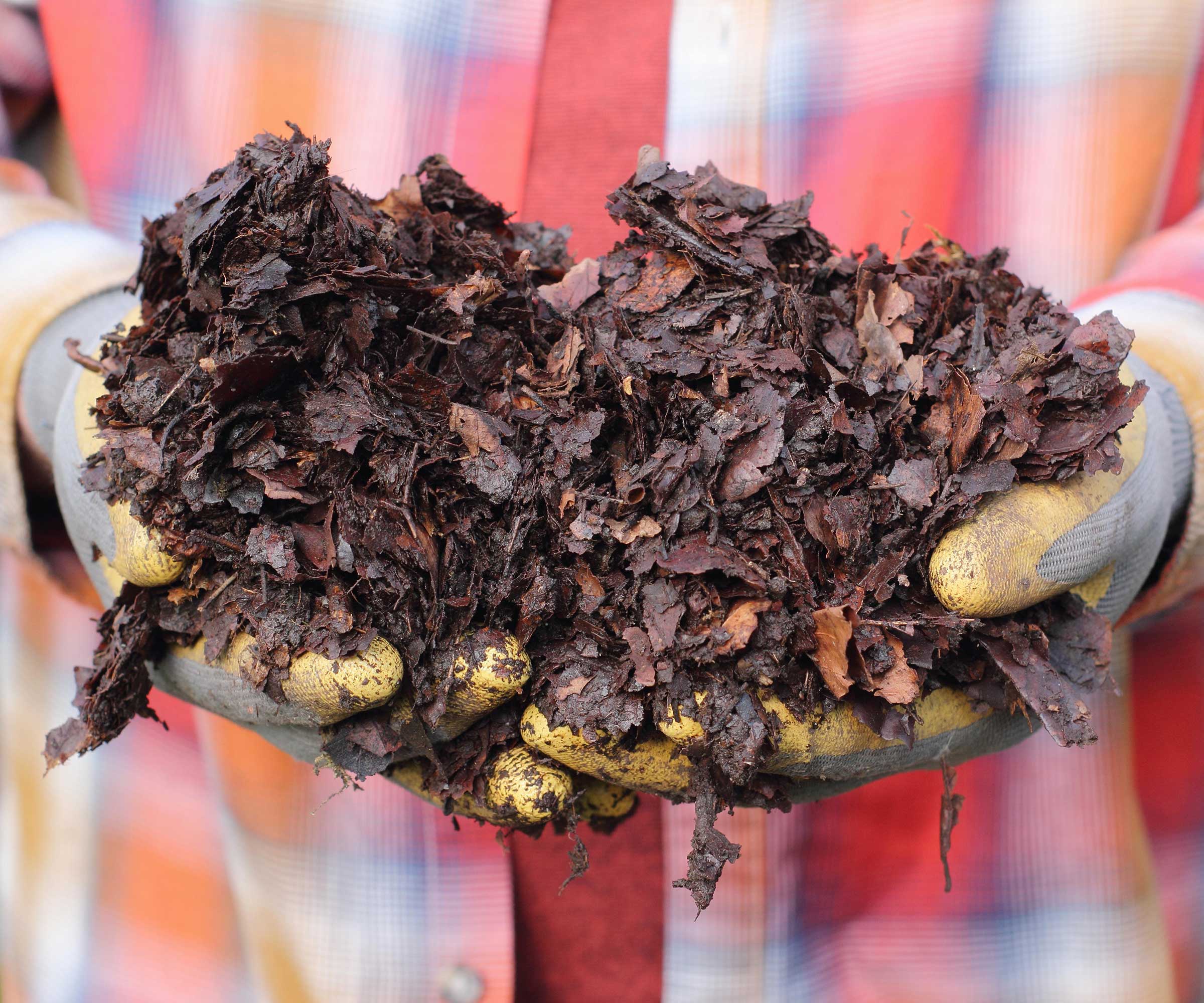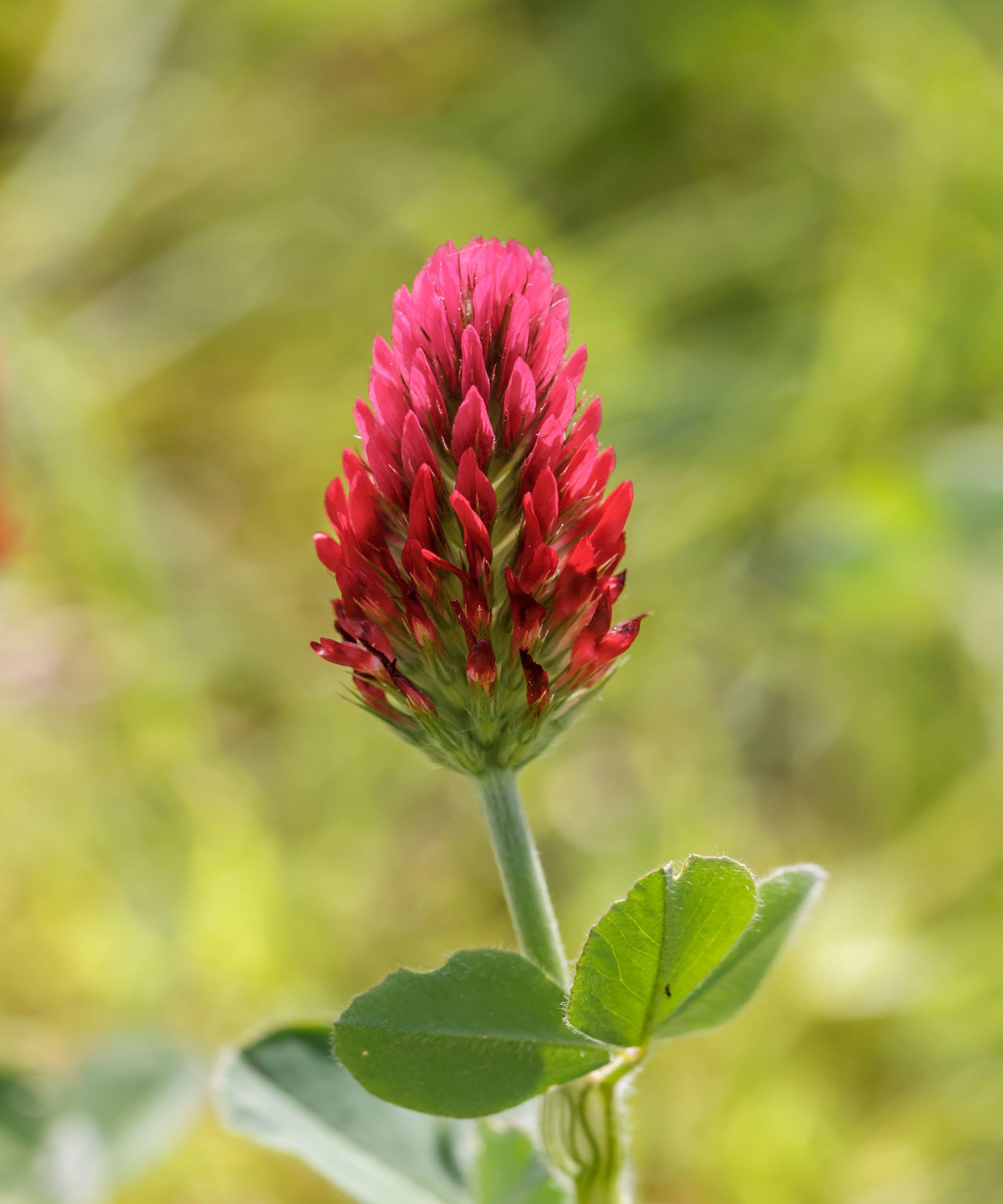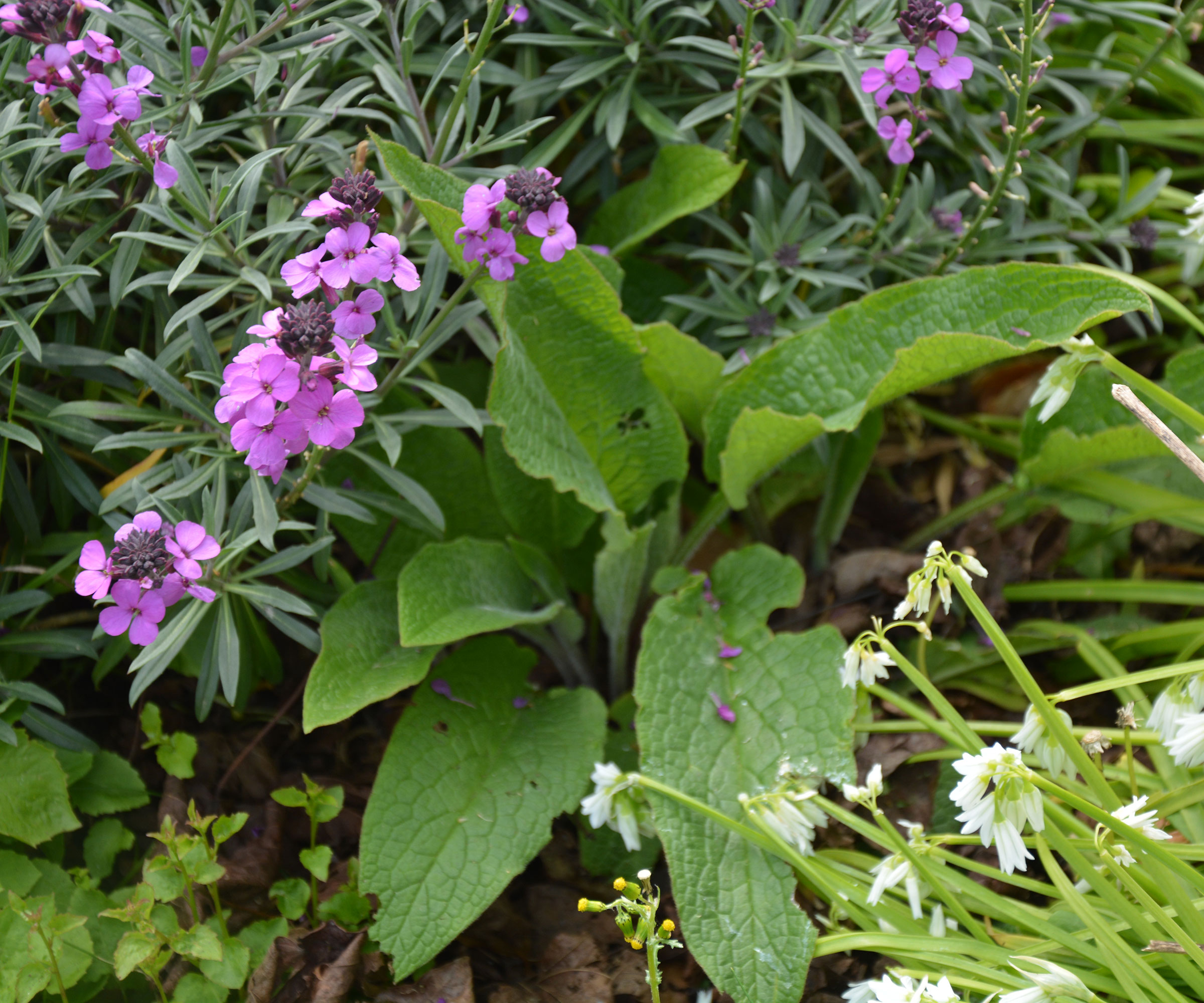How to boost soil nutrients for the good of your backyard – and the planet
Find out how important it is to take care of the health of your soil by building up nutrients using sustainable practices instead of relying on synthetic fertilisers


I never thought I'd be saying this but I'm really interested in the subject of soil health at the moment. It has never been more topical. You'll know why if you've watched the brilliant film Kiss the Ground on Netflix, which explores ideas around soil regeneration to mitigate climate change.
There's even a World Soil Day every December that celebrates the importance of healthy soil, and focuses on the precious link between soil and water. Over 95 per cent of our food originates from these two fundamental resources, a statistic that certainly helps focus the mind in terms of making improvements.
While soil regeneration on a larger scale can reverse global warming, copying the key ideas in your own garden is helpful too, especially if you're trying to establish wildflower areas, prairie gardens or other ideas that include a more hands-off and less intensive approach to garden design.
Good soil and water management on a localized level also improves our capacity to withstand extreme climate events such as droughts, floods, and sand or dust storms.
In our guide, you can find out how to boost your soil's nutrients so that healthy soil becomes integral to everything you do as part of your own backyard ideas. It means you can join this global movement to make a difference, and at the same time grow healthier plants.

8 ways to boost your soil's nutrients - and the importance of doing so
The importance of cultivating healthy soil is vital even in the smallest of spaces. It doesn't matter whether you have a tiny backyard or a huge one, the same rule applies in terms of soil management: what gets taken out of the soil when growing plants needs to be put back.
'The base ingredient of all gardens is the ground we walk on,' says landscape designer Jinny Blom, author of What Makes A Garden, available here from Amazon. 'There is skill involved in determining whether your soil is healthy or not. Feeling it and smelling it tells you a great deal. Having a bit of a dig around allows you to learn more about its structure.'
Design expertise in your inbox – from inspiring decorating ideas and beautiful celebrity homes to practical gardening advice and shopping round-ups.
The most fundamental element of creating a successful garden is understanding the make up of your soil. This will play a key role in influencing the planting and final outcome of your garden. So, make it a priority to find out about soil types so that you can enhance what you have.
1. Find out about soil function

Your garden soil has a key role to play in the successful cultivation of plants. In the most basic sense, soil provides a physical support for plants. At the same time, it holds the water, air and nutrients that are so important for successful cultivation.
Soil is also home to all the organisms that play an essential role in making it suitable for growing plants by enriching it with organic matter. These organisms range from small decomposing animals like mice and moles, to earthworms, which are one of the most beneficial things as they create channels in the soil that helps aeration and drainage.
Fungi are another important organism as they live on decomposing organic matter and often grow close to a plant's roots, which helps them assist in the transfer of nutrients from the soil.
The main micro-organisms are bacteria, which break down minerals and organic matter in the soil. If there is too much water in the soil and no oxygen available, harmful bacteria will flourish instead.
These elements combine and are toiling away beneath the surface to enrich your planting and contribute to soil health. But it's all about give and take, and ensuring the balance is right by finding out how to boost your soil's nutrients to replace what the plants take away.
2. Be aware of soil profile

'Soils represent a dynamic part of our natural environment with many inter-linked chemical, physical and biological processes, acting either together or consecutively to create a distinctive soil profile,' according to researchers J H Gauld and L A Dawson of globally recognised research organisation The James Hutton Institute.
The soil profile is significant when it comes to nutrient management as it offers an insight into how fertile your soil is. It's composed of a number of distinct layers, which are known as horizons. Put simply, it is defined as a vertical section of the soil from the surface down to where the soil meets the underlying rock.
A healthy topsoil (A horizon) is important because it's a source of plant nutrients and contains the majority of plant roots. The next layer down (B horizon) is the horizon most widely sampled if you need to test the pH of soil.
As the soil weathers and/or organic matter decomposes, the profile of soil changes over time, and can be impacted in particular by waterlogged conditions. If you love the idea of getting to grips with soil science as much as I do, think about extracting a core of soil with an auger or probe like this stainless steel soil sampler probe from Amazon.
3. Familiarize yourself with the benefits of using organic matter

There is an important difference between building good soil from within, such as with naturally decomposed organic matter, and adding commercial liquid nutrients or fertilizers that are shop bought.
Organic matter improves the soil by providing nutrients such as nitrogen, potassium and sulfur for plants, while also preventing the loss of these nutrients. It consists of dead and partly decomposed animal and plant life. This combination eventually breaks down completely to produce a rich substance known as humus, which boosts soil quality.
'Organic matter feeds the soil, fertilisers feed the plant,' explains RHS horticultural expert Stephen Millam. 'Though fertilisers can be very effective in dealing with short term nutrient deficiencies in the garden, a more long term, environmentally friendly and sustainable solution is to build up the organic matter in the soil. Organic matter will also improve soil structure, nutrient and water-holding capacity, and stimulate soil micro-organisms that help nutrients in the soil.'
Good sources of organic matter include garden compost, manure, leaf mold, and old mushroom compost. You can also buy processed forms of organic matter but it tends to be a more expensive option.
4. Realise the importance of mineral levels

Synthetic fertilizers can remedy some situations but it's important not to overuse them
Whether naturally occurring or provided by fertilizer, minerals are an important part of building soil nutrients. Plants are very dependent on being supplied sufficient quantities of mineral nutrition in the soil profile. Nutrients that come from either the breakdown of organic matter or the weathering of rocks are dissolved in water in the soil, then absorbed through the roots of plants to aid growth.
'Compost and organic matter contribute a balanced mix of nutrients, fostering a more comprehensive and sustainable nutrient supply,' explains sustainability expert Cristina Sollis of Green Hive. 'They improve soil texture, water retention, and nutrient-holding capacity.
'On the other hand, adding liquid nutrients or fertilizers is a more targeted and immediate way to address specific nutrient deficiencies. While this approach can quickly address nutrient shortages, it may not contribute to long-term improvements in soil structure and microbial diversity. Additionally, using excessive fertilizer can lead to nutrient imbalances, soil acidification, and environmental pollution.'
If your soil is deficient in one of the key nutrients it will soon show up in your plants, with some of the more obvious indications including yellowing leaves, and poor fruit or flower production.

As a sustainability specialist with a background in environmental engineering, Cristina brings a wealth of expertise to her role as a sustainability consultant at Green Hive. She conducts rigorous assessments of sustainability certifications and performs comprehensive brand evaluations that help consumers make informed sustainability choices.
5. Spot the common soil nutrient deficiencies

The yellowing leaves of this apple tree indicate a mineral deficiency
The three main soil nutrients are nitrogen (N), phosphorus (P) and potassium (its chemical element symbol is K), known colloquially as NPK, and often referred to as such on fertilizer packaging. If your soil is deficient in any of these major nutrients it will quickly show up in your plants.
'Nitrogen deficiency often results in stunted growth and yellowing of older leaves [known as chlorosis], as nitrogen plays a vital role in the production of chlorophyll,' says Cristina Sollis. 'In the case of phosphorus deficiency, older leaves may exhibit an unusually dark green or reddish-purple coloration. Potassium deficiency can lead to the bright yellowing of leaf margins on older leaves, eventually resembling scorched areas.' Another common indication of deficiency includes small flowers and fruit.
After the big hitters NPK, other important minerals in the major nutrient group include magnesium, where a deficiency shows up as yellowing, and early leaf fall. Insufficient calcium may cause the edges of new leaves to curl. Additionally, a shortage of sulfur may manifest as yellowing in younger leaves.
'Macro-nutrients, including nitrogen, phosphorus, and potassium, are required by plants in larger quantities,' says Cristina. 'They play fundamental roles in processes like photosynthesis, energy transfer, and overall plant development. On the other hand, micro-nutrients, such as iron, manganese, zinc, and copper are needed in smaller amounts but are equally essential for specific processes like chlorophyll synthesis, enzyme activation, and nitrogen metabolism within the plant.'
It's often not easy to determine which mineral is deficient so the answer could be to get a lab analysis done to determine exactly what's lacking. Alternatively it's always worth showing the experts at your local garden center a photo of the ailing plant.
6. Learn to love mycorrhizal fungi

Mycorrhizal fungi colonizes a host plant's root tissues
The soil in your yard is teeming with life beneath the surface, including plenty of beneficial fungi, which work by pumping good things into the root systems of plants and thereby improving the microbiome of your soil to create a healthy functioning medium for growing plants.
These powerhouses work by passing water and nutrients to the plant and helping them grow. They form a microscopic thread-like network known as mycelium.
It's easy to boost natural levels of mycorrhizal fungi by mulching soil with organic matter and leaf mold. You can also buy mycorrhizal fungi to sprinkle into planting holes.
'I tried using mycorrhizal fungi when planting a native shelterbelt [windbreak],' says Jinny Blom. 'You can buy it in sachets at garden centers. I was sceptical, yet the root development of the new plants was much better than I expected and I am converted by the logic of how it works.'
Mycorrhizal fungi can help plants establish more quickly and boost healthy growth by supplying additional water and nutrients. This means plants can resist drought and disease better, as well as improving crops and flowers.
7. Plant a cover crop in winter

Scarlet clover is high in nitrogen and makes an attractive green manure
In winter if you're not growing anything else you can use vegetable or flower beds to cultivate green manures, also known as cover crops, rather than leave your soil bare and unloved. The plants are grown during the dormant season and dug into the soil before they start to turn woody. The most beneficial green manures are sown in late summer and dug in the following spring a few weeks before a crop is planted.
By planting a winter cover crop you are protecting the soil structure in winter and preventing erosion, as well as providing organic matter and nutrients, particularly if you choose nitrogen fixing plants such as clover. Nitrogen is the one most likely nutrients needed by plants as they require a significant amount. Another hidden benefit is that cover crops prevent weeds.
When green manure crops are incorporated into the soil, they add substantial amounts of organic matter,' says Cristina Sollis. 'This organic material improves soil structure, water retention, and promotes microbial activity, creating a healthier soil environment.'
8. Hop on the no-dig trend

The no-dig gardening trend is an increasingly popular way of boosting your soil’s eco-system. By leaving the soil undisturbed and feeding it with a surface mulch the idea is to let soil organisms multiply and boost plant health. It's an easy way to garden organically, as this method is all about working with nature.
Over to pioneer of the no-dig movement Charles Dowding to explain: ‘No dig means soil is undisturbed, and you feed the soil life with organic matter on the surface to maintain drainage and aeration. The use of light-excluding mulches such as cardboard to kill weeds saves time too.’
No dig works on the basis that as soil is packed full of micro-organisms, minerals, organic matter, air and water that have formed a complex structure over time, ideally you want to disturb it as little as possible.
Digging the soil damages these delicate networks, and disrupts the worms and micro-organisms you need to support the health of the soil. It also destroys the structure, making it more difficult for roots to take up water and minerals.
This means no dig is a great idea if you're looking for ideas on how to boost your soil's nutrients.
FAQs
How do I make a natural fertilizer feed?
Natural plant feeds are a great idea for improving the health of soil while caring for the environment too. The good news is it's easy finding out how to make plant fertilizer.
Growing comfrey fertilizer in your yard will give you all the ingredients you need to make nutrient-rich 'comfrey tea'. Although primarily intended for feeding plants like tomatoes, roses, and apples, it benefits soil health too.
Once you've strained off the liquid you can add the leaves to your compost heap, where they will accelerate the composting process and add extra goodness to the mix. You can also use them as a type of mulch around plants. They will continue to break down and release nutrients and minerals into the soil.
Try using dandelions or nettles in the same way if you're looking for more ideas on how to boost your soil's nutrients.

Comfrey looks pretty as well as making a great plant fertilizer
Once you get interested in soil science (trust me, you will) find out how to make soil more acidic too. This is necessary if your soil is too alkaline and you want to grow gorgeous acid-loving plants like azaleas, rhododendrons, camellias, magnolias and hydrangeas.
You can also find out how to add phosphorus to soil to promote the growth of healthy roots and shoots, as well as how to add calcium to soil to encourage strong root systems, and improve drainage and aeration.

Lifestyle journalist Sarah Wilson writes about garden design and landscaping trends for Homes & Gardens. She has studied introductory garden and landscape design, and also has an RHS Level 2 qualification in the Principles of Plant Growth and Development. She is a regular contributor to Homes & Gardens and Livingetc. She has also written for Country Living, Country Homes & Interiors, and Modern Gardens magazines